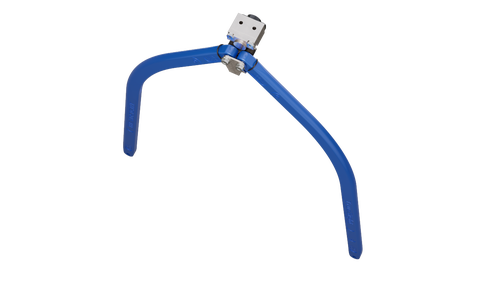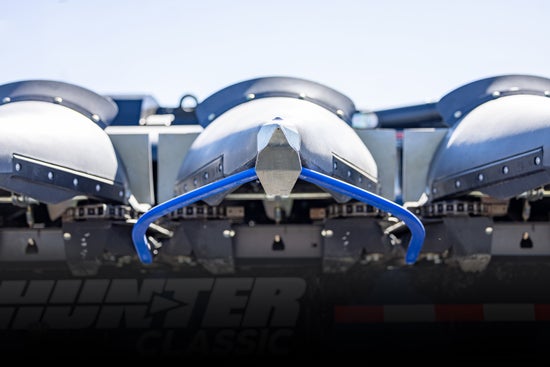
The problem: Manual steering during corn harvest can lead to operator fatigue, header loss, and snout damage.
The solution: Automatic row guidance reduces positioning errors while harvesting.
The proof: An average operator error of 1" off center cost -0.3 Bu/A on average, with a 2" error averaging a loss of -0.7 Bu/A.
The Value of Corn Row Guidance
Corn growers have been enjoying the benefits of row guidance on their combines for nearly a decade. They have gained improved harvest efficiency and increased productivity - especially in challenging harvest conditions.
Accurate row guidance can significantly improve material flow and feeding into the header, reduce snout damage, and increase harvest speeds in down corn. And, arguably most important, automatic row guidance reduces operator fatigue.
The question is, "Does corn row guidance pay?" We tested the TrueSight row guidance system to find out.
Automatic vs. Manual Steering
The first step was exploring any differences in performance between TrueSight and the abilities of an experienced combine operator. There was some variation between field conditions and operators tested, but the trend was clear: TrueSight had a standard deviation (average error from the center of the row) of 0.5" to 1", while manual steering resulted in a standard deviation of 1.9".
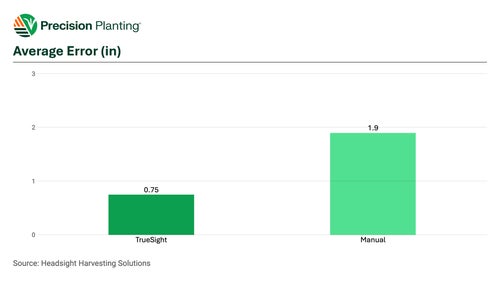
Header Loss
Trials were done to determine the effect of row guidance on header loss. All combine and header settings except, for row guidance, were set by the machine operator. John Deere, Case IH, and Geringhoff headers were tested and the harvested moisture ranged from 24% (Test 1) to 17% (Test 4).
As seen in the charts below, for a given row position error, there were significant variations in header loss between test conditions. These variations are due to machine settings, hybrid characteristics, field conditions, and harvest moisture.
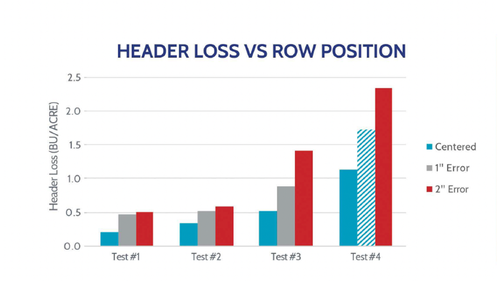
The effects of row position error are most obvious when the data is grouped by test condition. As seen in this chart, the header loss in these tests more than doubled with only 2" of error from centered on the row. As expected, the increase in header loss was more significant in the dryer harvest conditions (test #4).
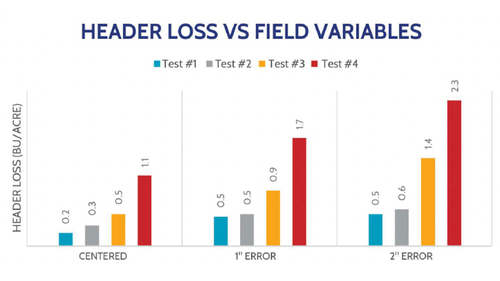
From these results, an average operator error of 1" cost -0.3 Bu/A average, with a 2" error averaging a loss of -0.7 Bu/A. During testing, it was noted that errors above 3-5" resulted in significant kernel shelling and ear loss. These effects caused header loss of over 5 bu/acre in tests with greater guidance errors.
Conclusion
Using automatic row guidance reduces positioning errors while harvesting, resulting in reduced kernel and ear loss at the header.
A typical corn grower could capture an additional +0.3-0.7 Bu/A in harvested yield compared to manually steering by adding combine row guidance. Using 1,500 acres of corn and a $3.70/Bu corn price, the payback would be $1,500- $3,700 annually.
In addition to reducing loss and the resulting monetary benefit, TrueSight helps decrease operator fatigue while increasing productivity and efficiency, especially in down corn.
Related Tags
